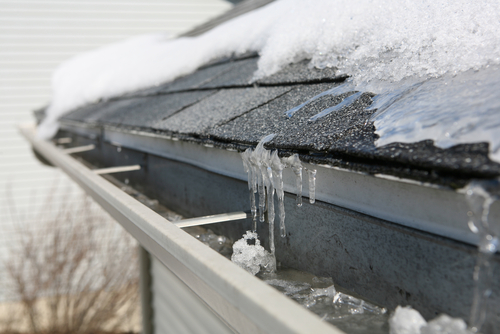Ice Dams: How They Form and How to Prevent Them

During the winter season, many homeowners experience the frustrating problem of ice dams forming on their roofs. Ice dams not only pose a safety hazard but can also cause significant damage to the structure of your home. In this blog post, we will educate you on what ice dams are, how they form, and most importantly, how you can prevent them from forming in the first place.
What are Ice Dams?
Ice dams are ridges of ice that form at the edge of a roof, preventing melting snow from properly draining off the roof. They usually occur in colder regions where there is heavy snowfall and fluctuating temperatures. As the snow on the roof begins to melt, the water runs down the roof and refreezes at the eaves, forming a barrier of ice. This barrier prevents the water from draining off the roof, causing it to accumulate behind the ice dam. Over time, the trapped water can seep under the shingles, leading to roof leaks, water damage, and potential mold growth.
How Do Ice Dams Form?
There are several factors that contribute to the formation of ice dams. Firstly, inadequate insulation and ventilation in the attic can create warm zones on the roof, causing the snow to melt. These warm zones are often created by heat escaping from the living space below the attic. As the melted snow reaches the colder eaves, it refreezes and forms an ice dam.
Another factor that contributes to ice dam formation is the presence of an uneven roof surface. If there are dips or valleys on the roof, they can accumulate snow and create areas prone to melting and freezing. Additionally, clogged gutters and downspouts prevent proper drainage, allowing ice dams to form along the roof edge.
How Can I Prevent Ice Dams From Forming?
Preventing ice dams involves a combination of proper insulation, ventilation, and roof maintenance. Here are some steps you can take to prevent the formation of ice dams:
1. Insulate your attic: Adequate insulation in the attic helps to prevent heat from escaping and melting the snow on the roof. Make sure your attic is properly insulated to keep the temperature consistent throughout the roof surface.
2. Ensure proper ventilation: Proper ventilation in the attic helps to regulate the temperature and moisture levels. It prevents the formation of warm areas on the roof that can lead to snow melting and ice dam formation. Install soffit vents and ridge vents or consult with a professional to ensure your attic has proper airflow.
3. Seal air leaks: Seal any air leaks in the attic to prevent warm air from escaping into the roof space. Use weatherstripping or caulk to seal gaps around chimneys, plumbing vents, and electrical wiring.
4. Keep gutters and downspouts clean: Regularly clean out your gutters and downspouts to ensure proper drainage. Remove debris, leaves, and ice build-up that can obstruct the flow of water. Consider installing gutter guards to prevent debris from entering in the first place.
5. Use a roof rake: After heavy snowfall, use a roof rake to remove snow from the bottom few feet of the roof. This will prevent excessive snow accumulation that can contribute to ice dam formation.
6. Install ice and water shield: Consider installing ice and water shield under your shingles to provide an extra layer of protection against water infiltration. This self-adhesive membrane helps to prevent any water backed up behind ice dams from penetrating the roof.
Summary:
Ice dams can cause significant damage to your home if they are not properly addressed. By understanding how ice dams form and taking preventive measures, you can protect your home from potential leaks, water damage, and mold growth. Remember to insulate your attic, ensure proper ventilation, seal air leaks, clean gutters regularly, remove snow accumulation from the roof, and consider installing ice and water shield. By taking these steps, you can have peace of mind during the winter months, knowing that your home is safeguarded against the harmful effects of ice dams.




